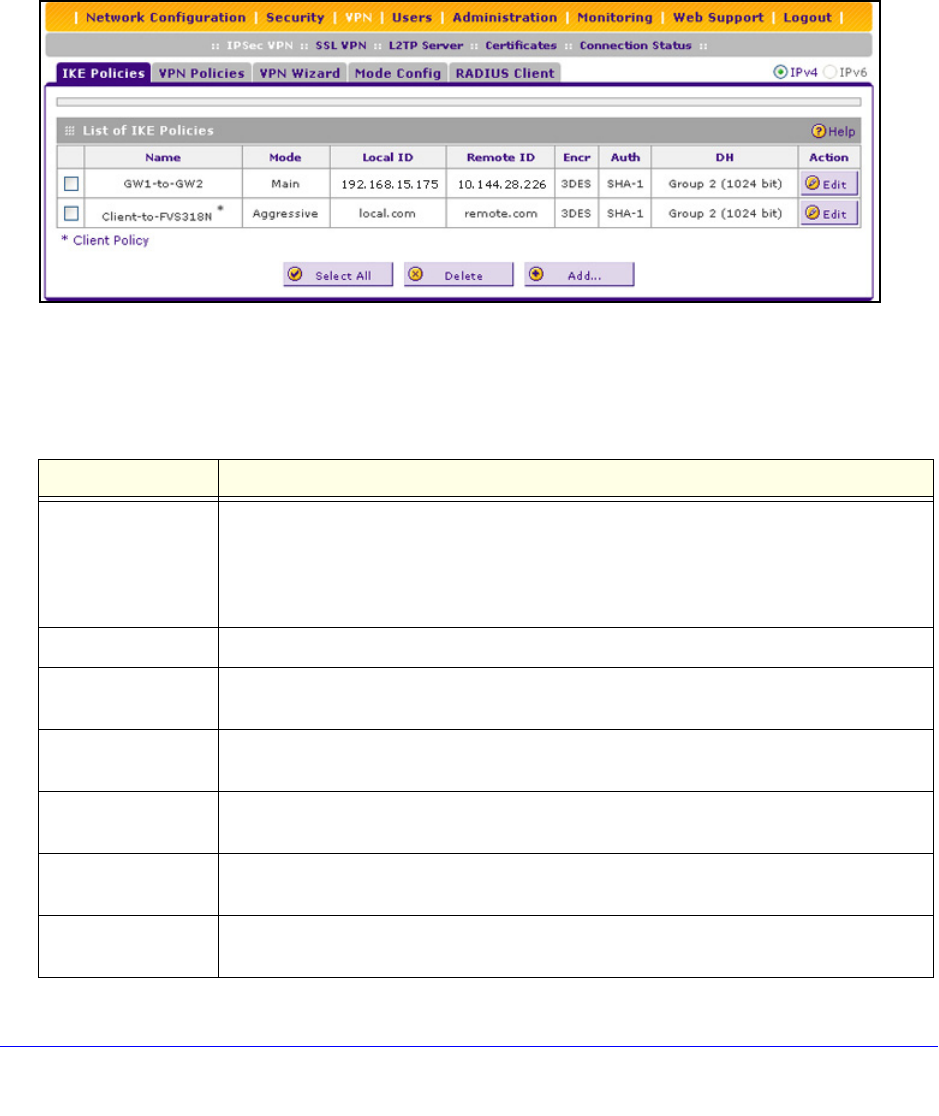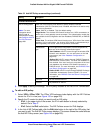
Virtual Private Networking Using IPSec and L2TP Connections
223
ProSafe Wireless-N 8-Port Gigabit VPN Firewall FVS318N
IKE Policies Screen
To access the IKE Policies screen:
Select VP
N > IPSec VPN. The IPSec VPN submenu tabs display with the IKE Policies
screen in view. In the upper right of the screen, the IPv4 radio button is selected by default.
The IKE Policies screen displays the IPv4 settings. (The following figure shows some
examples.) To display the IPv6 settings on the IKE Policies screen, select the IPv6 radio
button.
Figure 139.
Each policy contains the data that are explained in the following table. These fields are
explained in more detail in Table 52 on p
age 226.
Table 51. IKE Policies screen information for IPv4 and IPv6
Item Description
Name The name that identifies the IKE policy. When you use the VPN Wizard to set up a VPN
policy, an accompanying IKE policy is automatically created with the same name that you
select for the VPN policy.
Note: The name is not supplied to the remote VPN endpoint.
Mode The exchange mode: Main or Aggressive.
Local ID The IKE/ISAKMP identifier of the wireless VPN fire
wall. The remote endpoint needs to
have this value as its remote ID.
Remote ID The IKE/ISAKMP identifier of the rem
ote endpoint, which needs to have this value as its
local ID.
Encr The encryption algorithm that is used for the IKE security
association (SA). This setting
needs to match the setting on the remote endpoint.
Auth The authentication algorithm that is
used for the IKE SA. This setting needs to match the
setting on the remote endpoint.
DH The Diffie-Hellman (DH) group that is use
d when keys are exchanged. This setting needs
to match the setting on the remote endpoint.


















